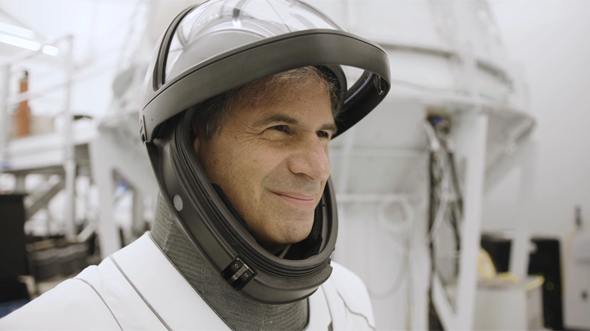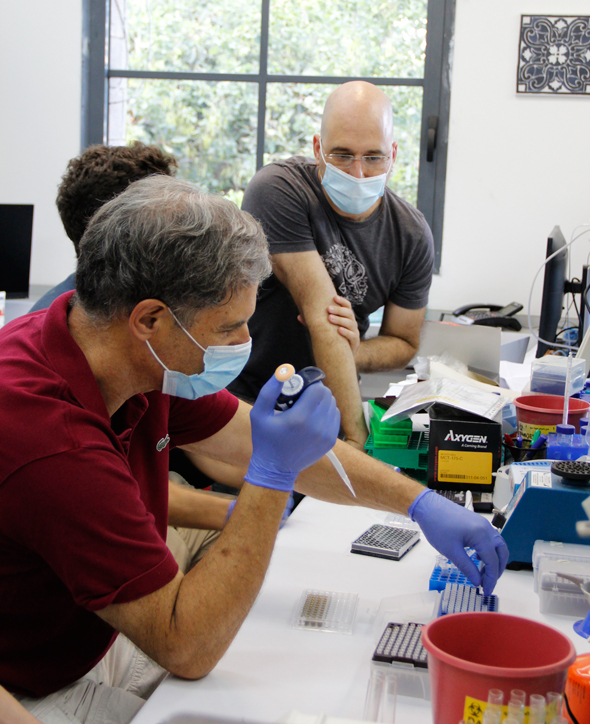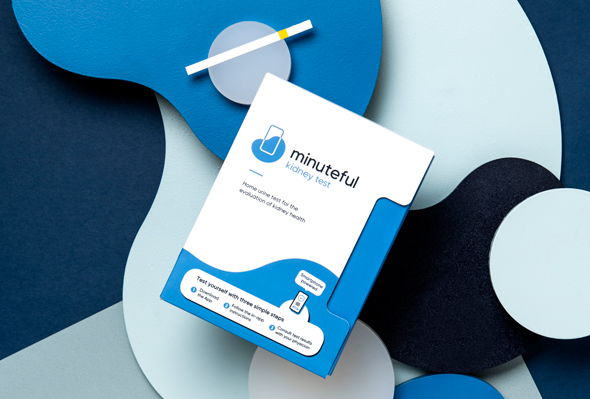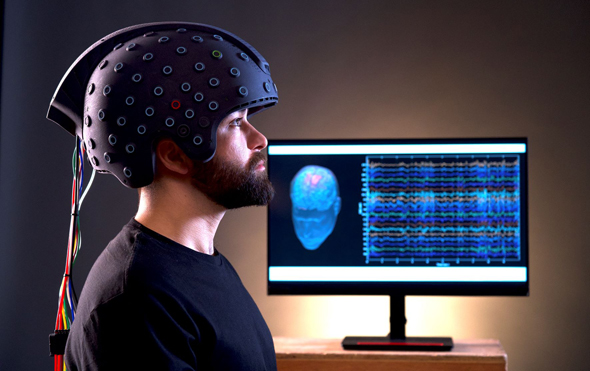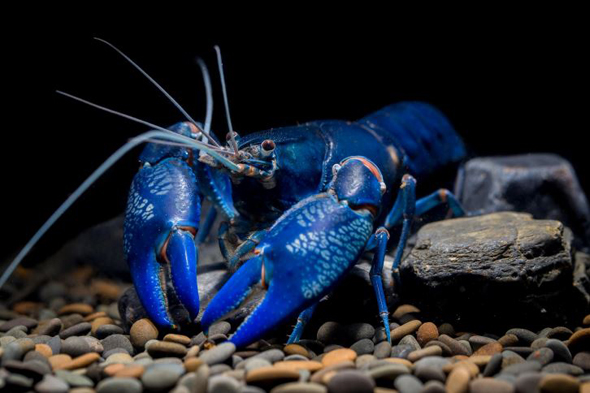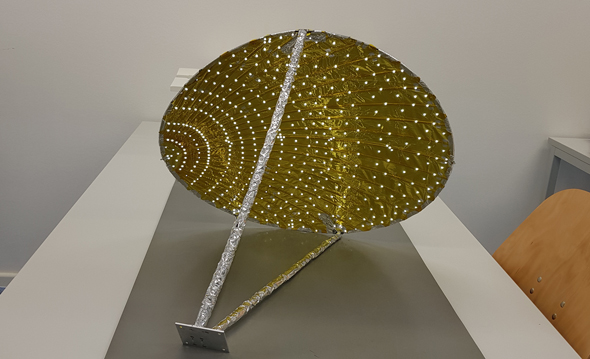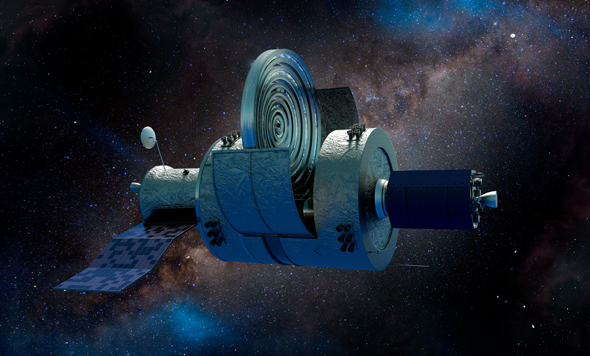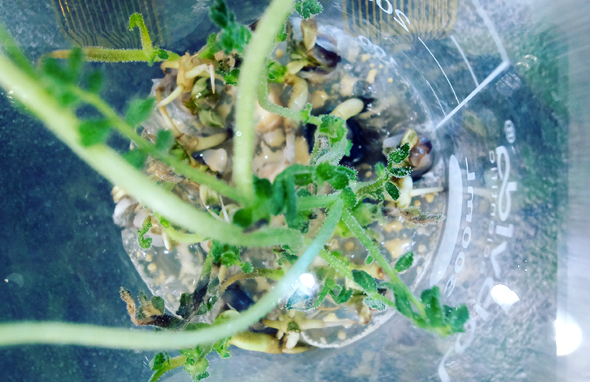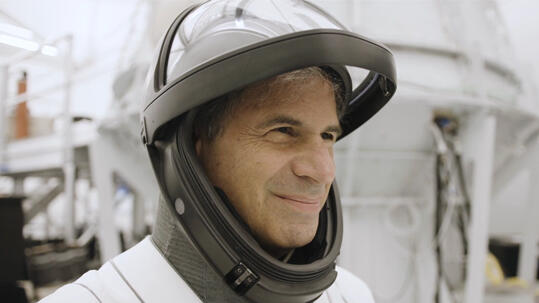
Next Israeli astronaut’s 35 experiments revealed
Needle-free blood tests, cosmic lightning, super-vegetables, and nano-ghosts are just a few of the innovative experiments Eytan Stibbe will test during his February mission to the International Space Station
Although Stibbe’s flight will make him one of the first private astronauts to embark to space along with the rest of his Ax-1 crew, his mission is being partially sponsored by the Ramon Association, the Israel Space Agency, and the Ministry of Innovation, Science and Technology. During his 10-day planned stay, he will devote most of his time to performing experiments and testing the innovative technologies as well as lecturing in physics and other science fields to Israeli school children in Hebrew.
The experiments range from medicine, astrophysics, agriculture, and more. They are as follows: Medicine: 1. CRISPR is a genetic diagnosis system that enables genetic detection of diseases to identify pathogens that may cause astronauts to fall ill. This experiment does not require bulky laboratory equipment or highly-skilled personnel, and is being led by researchers at Tel Aviv University and the Israel Agricultural Research Organization. 2. “Space travel,” is an experiment that uses T-cells in space to examine the physiological responses seen when the human body is exposed to such extreme conditions, and help preserve and restore astronauts' immune functions which could lead to longer-term missions. The study is being led by Tel Hashomer, Thomas Jefferson University, and Israeli biotech startup Oncohost. 3. Human BBB in space, attempts to find a cure for Alzheimer's disease. BBB, or blood barrier, is a biological marker leading to Alzheimer's disease. The experiment, led by Sheba Medical Center, will analyze the effects of microgravity on vascular function in the brain, and potential BBB-targeted drugs which can treat the disease. It has been proven that Alzheimer’s disease advances slower in space, so researchers will attempt to mimic and study how the disease’s progression may be reduced using this method. 4. Urinalysis in space, led by Healthy.io, an Israeli medical device startup that delivers home urinalysis and digitized wound care, will perform urine tests and analyze the results in real-time of astronauts aboard the station, monitoring kidney function. 5. The impact of space travel on the urinary microbiome will examine urine samples from astronauts before, during, and after missions to evaluate the microbiome presence in urine using modern methods of genetic sequencing, in an attempt to cure urinary tract infections that greatly affect astronauts. The study is a collaboration between Sheba, the Texas University of Technology, Thomas Jefferson and the University of Pennsylvania hospitals, and Texas-based startup MicroGenDX. 6. Remote evaluation of emotional distress will study astronauts’ emotional states using sensors to analyze vital signs, sleep physiology, cognitive function, visual and auditory performance, and emotional skills, and show how astronauts manage stressful events and management intervention. The experiment is being led by Sheba, Thomas Jefferson and Pennsylvania University hospitals, and Israeli startups X-trodes and Stroke Alert Ltd. 7. X-trodes will conduct a second experiment to remotely analyze emotional stress by studying astronauts pilots’ flight patterns using the X-trodes monitoring sleep home kit, which contains artificial-skin sensors with wearable technology for in-depth analysis of sleep stages. 8. Stroke Alert Ltd. will also conduct a second experiment to remotely detect strokes using a sensor equipped with machine learning tools to monitor astronauts before, during, and following return from their mission. 9. The Veye device will enable blood tests to be performed without a needle. Remaining in microgravity can cause changes to astronauts’ blood, and affect the production of red and white blood cells. Previously, it was assumed that astronauts would suffer anemia, however studies have shown that in fact there is an increase in the amount of red blood cells, platelets, and hemoglobin levels in the blood. To enable continuous blood tests, the device photographes a small part of the eye, and using advanced image processing and artificial intelligence algorithms can analyze astronauts' blood levels. The study is being carried out by Sheba and TAU. 10. Evaluation of visual functions in spaceflight will examine changes in visual function during space flight. Astronauts’ far and near visual acuity and retinal function will be tested to help researchers better understand how a lack of gravity affects the vision. Stibbe and his crew will test out their color vision, three-dimensional vision, field of view, and more under directive from TAU.11. The eye in orbit study will examine anatomical and functional changes of astronauts’ eyes in space, especially concerning eye pressure in and around the optic nerve. Currently, scientists believe that drainage of blood in the retina and blood layer may occur in microgravity, harming vision. However, using the technology developed by Rabin Medical Center, which uses a new imaging method combining coherence angiography and tomography, it can detect microvascular changes in the retina.
12. In chemotherapy in space, researchers from the Oncology Department from the Schneider Center for Pediatrics will study leukemia cells under microgravity conditions in the presence of chemotherapy, to investigate the proliferation and response of cells, and further study child chemotherapy, while monitoring changes in RNA. 13. The iCapture device will perform retinal scan and eye monitoring, examining how the shape of the eye can change under microgravity conditions. Some astronauts have reported permanent vision damages after spending prolonged time in space, which is also termed space-related neuro-ocular syndrome (SANS). The device, which has been developed by professionals at Sheba, alongside Spring Biomed Vision, the St. John’s of Jerusalem Eye Hospital in East Jerusalem, and the ARC Medical Innovation Center, provides high-resolution scans of the fundus (the back surface of the eye that contains the retina, macula, optic disc, fovea and blood vessels). 14. Neuro-wellness in space, which aims to improve brain health and designed by brain.space, an Israeli startup and researchers at Ben-Gurion University of the Negev, uses EEG sensors to measure brain activity and determine a patient's mental state, while presenting training games and videos that are influenced by real-time brain activity. It will perform neurofeedback in remote communication with its sensor platform to improve astronauts' brain health. 15. The reflective eye test will test early-onset of neuro-ocular syndrome (SANS), which has been linked to obesity and a decrease in near-term vision. The experiment is being led by researchers at Bar-Ilan University and IAMI, and will investigate the effects of microgravity on visual function by using a widget to assess eye fitness before, during, and after a task. 16. In “overhead spectacles,” astronauts will test innovative eyewear for those with beard-vision. Shamir Optical Industry Ltd, which produces high-performance lenses, has come up with an innovative way to treat “beard vision,” where aging eyes are unable to focus at close distances. Shamir’s OverHead PALs lens provides optical enhancement at the bottom of the lens, and allows clearer vision at closer range.17. The impact of space flight on the cardiovascular health of astronauts will examine how microgravity can change the structure of the heart, and the size of its cavities. In addition exposure to radiation in space, it may accelerate the progression of atherosclerosis and even cause calcifications in the blood vessels. The study will test astronauts' biological samples (blood, saliva, urine and feces), and will be carried out by doctors at TAU.
18. Microgravity effects on Alzheimer's will study how space affects aging of the immune system, and will study the progression of dementia, including Alzheimer's disease. The study will analyze how space may affect the immune system and brain function, and is being carried out by the Weizmann Institute of Science in Rehovot. 19. Pathogens' gene expression will examine bacteria production in space, which are a leading cause of foodborne illnesses, and are a common source of infections in humans and animals. Previous studies have shown that growing bacteria in outer space significantly improves their development. This experiment will grow cultures in space and compare them to those grown in similar ways on Earth, and is being led by researchers at Sheba. 20. The microbiome experiment will test the effect of microgravity on the microbiome - namely bacteria present in the gut - and the effect of antibiotics in space. The study is being carried out by the Tichon Hadash Tel Aviv High School. 21. Plastic dissolving bacteria will test how plastic is decomposed by the Sakaiensis Ideonella bacterium in space. Some bacteria undergo certain processes in microgravity conditions, leading their genome to undergo mutations), which makes them far more powerful. The study is being carried out by the Shimon Ben Zvi High School in Givatayim. 22. Amorphical aims to improve astronauts’ bone and muscle function, which face degeneration during long-distance space missions. Israeli startup Amorphical develops and manufactures amorphous calcium carbonate from blue crayfish that can help increase bone mass and improve muscle function. The experiment will be tested on SpacePharma’s mobile miniaturized lab platform. Optics & Communications: 23. The fluidic space optics study will create a lens using a viscous liquid, and will enable astronauts to create optical components without the need for mechanical polishing. This will pave the way for the production of advanced optical components in space and create telescopic lenses. The Technion Institute of Technology, NASA Ames Research Center, and MIT have partnered on this project.24. NISSAN nano-ISS antenna, which has been built by space tech startup NSLComm, will deploy a pop-up antenna capable of delivering high-bandwidth communications in space. The experiment will deploy an antenna in the station, while a camera will record the course of the deployment as well as its spatial accuracy, and help authorize the antenna for satellite use.
25. An electromagnetism experiment will study how Earth's magnetic field protects us from charged particles and cosmic radiation, and search for methods to improve navigational systems. The experiment will test technology that enables future deployment of magnetic sensors on small satellites, using a “magic wand,” termed “Flute” that is made of a polymer that is resistant to the harsh environment in space, and can study such mechanisms. It was developed by a group of researchers at the Soreq Nuclear Research Center. Astrophysics: 26. ILAN-ES, which will be conducted by Reichman Univerity and TAU, will observe upper-atmospheric lightning - occasionally referred to as “lightning elves” - which is a rare form of electrical-breakdown phenomena that occurs above the altitudes of normal lightning and storm clouds. Named after fallen first Israeli Ilan Ramon, the experiment is a follow-up to his Meidex experiment. Using a camera, astronauts will photograph phenomena from space, and be able to detect lightning storms that inhibit the ISS’s flight path. A team of researchers on Earth will also photograph such occurrences from ground stations, while scientists will use the comparison to explain the presence of electrical phenomena in the atmosphere.27. The COTS-Capsule will enable the use of commercial electronics in space by protecting them from hazardous radiation. The nanosatellite device was launched to the station two weeks ago separately, and was built by TAU, Israel Aerospace Industries, the Afeka College of Engineering, and the Herzliya Science Center.
28. AstroRad, built by space tech startup StemRad, is a special vest that will be worn by Stibbe, and protects astronauts against cosmic radiation in space. 29. The vacuum arc thruster is an experiment designed by the Technion and startup Space Plasmatics that aims to test proof of propulsion using vacuum technology by recording motions using temperature measurements and energy consumption to help scientists learn how to better maneuver tiny satellites.30. GALI is an experiment designed to track gamma ray bursts, which are intense energetic electromagnetic explosions that have been observed in distant galaxies, and are believed to be emitted by supernovas and blackholes. The Technion-built experiment includes a one-liter sensor to be placed outside the station to monitor these eruptions. Partners on the project include Israeli startup MicroGic Electronics and IAI.
Agriculture: 31. Space hummus will use synthetic biology and study plants’ extracellular optogenetics using light and sensors to grow chickpea plants in space. This will enable astronauts to grow different types of plants in space, perhaps on a future lunar settlement. The experiment is being led by SpaceIL co-founder Yonatan Winetraub from Stanford University, who is training religious female high school students who attend the Yeruham Science Center to build the programming and sensors that can control growth rate, cameras, and different light wavelengths that may inhibit growth of the plant in space. 32. Fresh greens in space has been designed by Israeli startup GreenOnyx Ltd, aims to develop super-vegetables in space filled with nutrients and dietary supplements, including a water-based lentil plant that can be grown under microgravity conditions in an autonomous growing facility. 33. "The Power of Moringa" will use Moringa seed powder to kill bacteria, and clean spaceships. This is a simple and inexpensive way to sanitize areas, and can be used for longer-term space missions. The plant is also considered a superfood. The experiment was designed by religious male students at the Amit Yeshiva High School in Safed. 34. Meat for space, created by cultivated meat startup Aleph Farms, uses cow cells to produce meat in a lab. The study will investigate the effects of microgravity on the proliferation and differentiation of cow cells that make up muscle tissue, and monitor as they become the building blocks of steak. Astronauts will attempt to grow cow cells for cultured meat under microgravity conditions, with Aleph partnering with SpacePharma and Space Applications.35. “Nano-ghosts” are stem cells that are no larger than a nanometer, and are extracted from stem cell membranes, but have not yet undergone the process of differentiation into certain kinds of functional cells for different organs. In order to heal injured organs, these cells can be used to help the body itself, and stop the spread of infections. These “nano-ghosts” will be wrapped in PEG polymer, and tested by astronauts in space. The experiment was created by students from Dekel Vilnai Junior High in Ma’ale Adumim.
